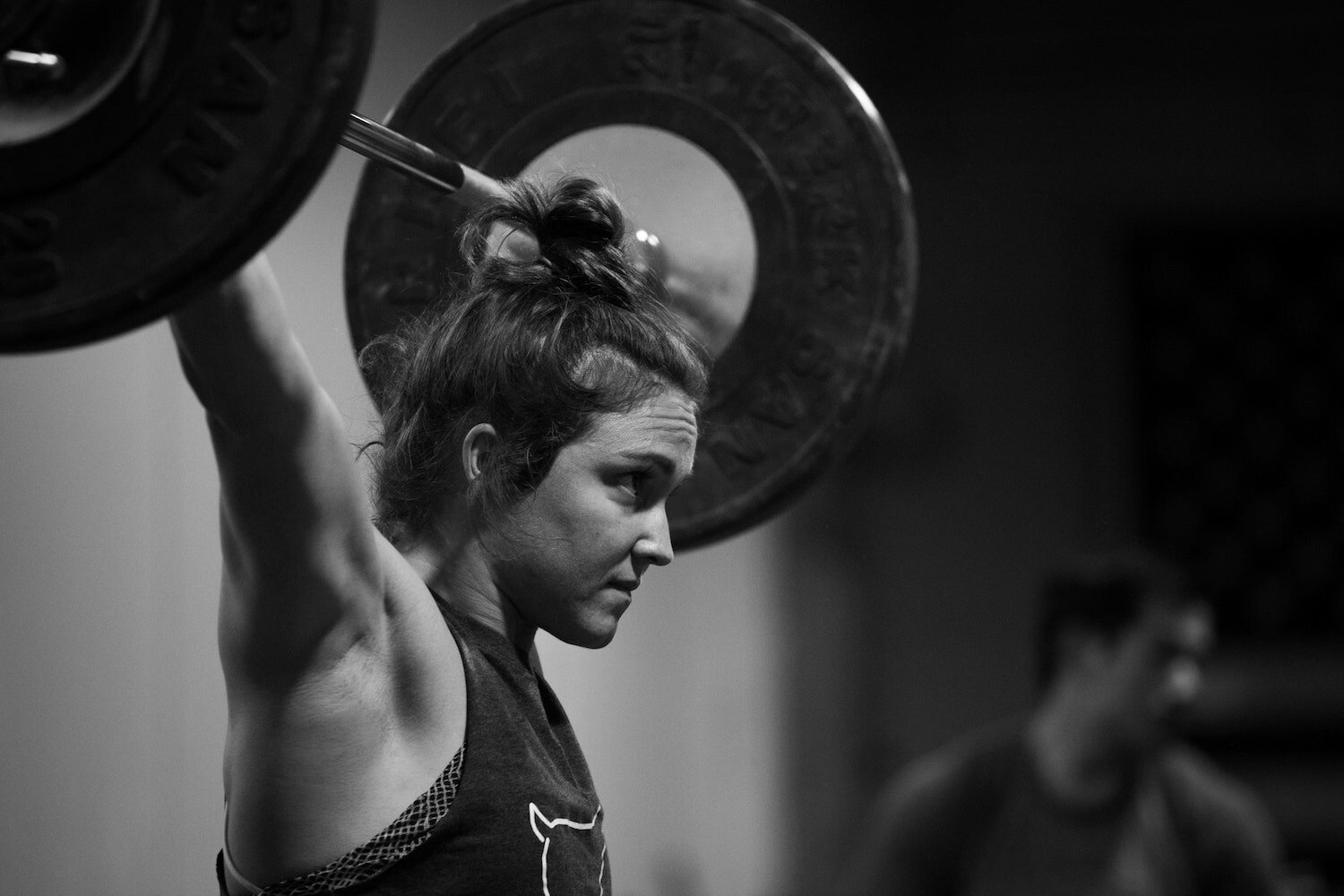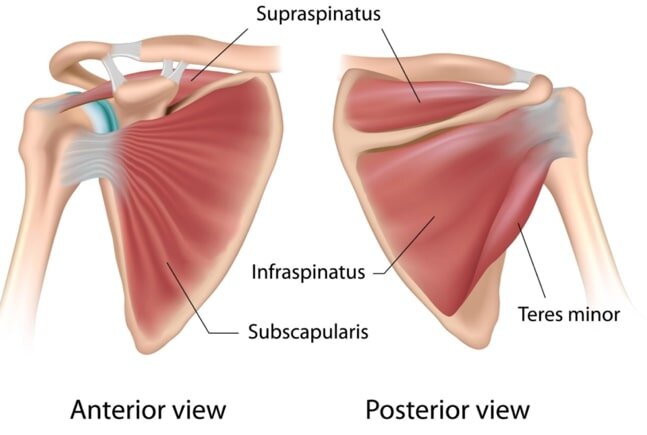The Best Rotator Cuff Stretches You Aren't Doing
10 Minute ReadThe rotator cuff is a group of four muscles in the shoulder. These muscles include infraspinatus, supraspinatus, subscapularis and teres minor. Each muscle has a specific function and together they help to provide stability to the shoulder joint by keeping the head of the humerus (your upper arm bone) in place.
ROTATOR CUFF ANATOMY
Photo credit: https://allcareptc.com/publications/rotator-cuff-injuries-arent-just-for-athletes/
The infraspinatus muscle serves to externally or laterally rotate the arm at the shoulder joint (think of a waiter holding a tray out by their side). Your infraspinatus originates along the infraspinous fossa of the scapula and inserts at the greater tubercle of the humerus. This means that it runs from the back of your shoulder blade and attaches to the lateral aspect of your upper arm bone.
The supraspinatus muscle acts to abduct the arm (think of raising your arm out to the side when you’re doing a jumping jack). It also prevents the humerus from slipping inferiorly out of its socket. Supraspinatus originates along the supraspinous fossa of the scapula and inserts at the greater tubercle of the humerus, meaning that it comes from the top portion of your shoulder blade and runs over the top of the shoulder to insert along the lateral upper aspect of the arm bone.
The subscapularis muscle functions to internally rotate the shoulder (think of when you bring your arms in front of you to zip up your jacket). Your subscapularis originates along the subscapular fossa of the anterior scapula and inserts at the lesser tubercle of the humerus. This means that subscapularis starts along the front surface of the scapula and wraps around the front of your arm to insert on the front aspect of the arm bone.
The teres minor muscle runs with infraspinatus and thus, its function is similar in acting to externally or laterally rotate the arm. Teres minor comes off the lateral border of the back of the scapula, below infraspinatus and inserts at the greater tubercle of the humerus.
COMMON INJURIES
Rotator cuff injuries commonly occur in people who repeatedly perform overhead movements, whether it is for work (such as carpenters, painters, mechanics) or athletes (Olympic weightlifting, CrossFit and tennis, for example). Improper technique with repetitive movements can put excessive stress on tendons. These injuries often lead to tendinitis in one or multiple rotator cuff muscles.
Tendinitis is inflammation or irritation of a tendon. Your tendons connect muscle to bone. Tendinitis of the rotator cuff can cause pain at the shoulder joint with movement. The pain is often characterized as a deep, dull ache in the shoulder.
Luckily, most cases of tendinitis recover with physical therapy exercises that improve flexibility and strength of the shoulder musculature!
Acute, one-time injuries to the rotator cuff can also occur. These can include events that involve a fall, landing on that shoulder or other intense, direct trauma.
Symptoms of rotator cuff injuries and dysfunction include:
Pain and difficulty reaching overhead or behind your back
Shoulder pain with sleeping or lying on the affected shoulder
Reduced shoulder strength
Rotator cuff injury or irritation can also refer pain along the front of the shoulder, down the arm and into the hand, on the affected side.
WAYS TO IMPROVE YOUR ROTATOR CUFF HEALTH
Prioritize Your Weightlifting Technique: If you participate in an overhead sport, your technique is vital to your shoulder health. Consider getting professional instruction or taking lessons, especially if you are new to the sport or have had shoulder issues in the past with your current sport or in your prior athletic activities. Learn the Olympic lifts the right way with our 8-Week LIFTRIGHT Program, click HERE to learn more!
Improve Your Mobility: For many of us, athletics are a hobby. We have full time jobs, that often put our shoulders in poor postures for hours at a time. Then, when we go to put weight overhead, throw a ball, or swim, these postures can lead to pain due to tight shoulders. By doing daily mobility work, even for just 5 minutes, you can improve your range of motion and reduce unnecessary trauma on tight musculature. Start improving your range of motion with our 8-Week Shoulder Mobility Program! Click HERE to get started!
Change Your Workplace Setup: Many companies can provide ergonomic assessments for your workspace. These include adjustments to chair height, monitor height, keyboard and desktop arrangements depending on your body type and work tasks.
Strengthen Your Rotator Cuff Muscles: By preparing your muscles for your sport or job, you can improve their tolerance to withstand greater loading and stress. Strengthen your shoulders with our 8-Week Shoulder Stability Program! Click HERE to learn more!
MY FAVORITE SHOULDER MOBILITY EXERCISES
BANDED LAT STRETCH + ACTIVATION
Points of Performance
Try to keep your palm facing up.
Perform 5 reps of a three second lat activation (engage by pulling your lat down towards your glutes).
Then relax into a passive stretch for 30 seconds.
TABLE TOP STRETCH
Points of Performance
Point your fingertips away from you.
Push through your heels to lift your hips up.
Keep your core braced.
THORACIC ROTATION IN QUADRUPED
Points of Performance
Setup with your knees directly underneath your hips, hands directly underneath your shoulders.
Try and rotate as far as possible.
Hold at end range for three seconds.





